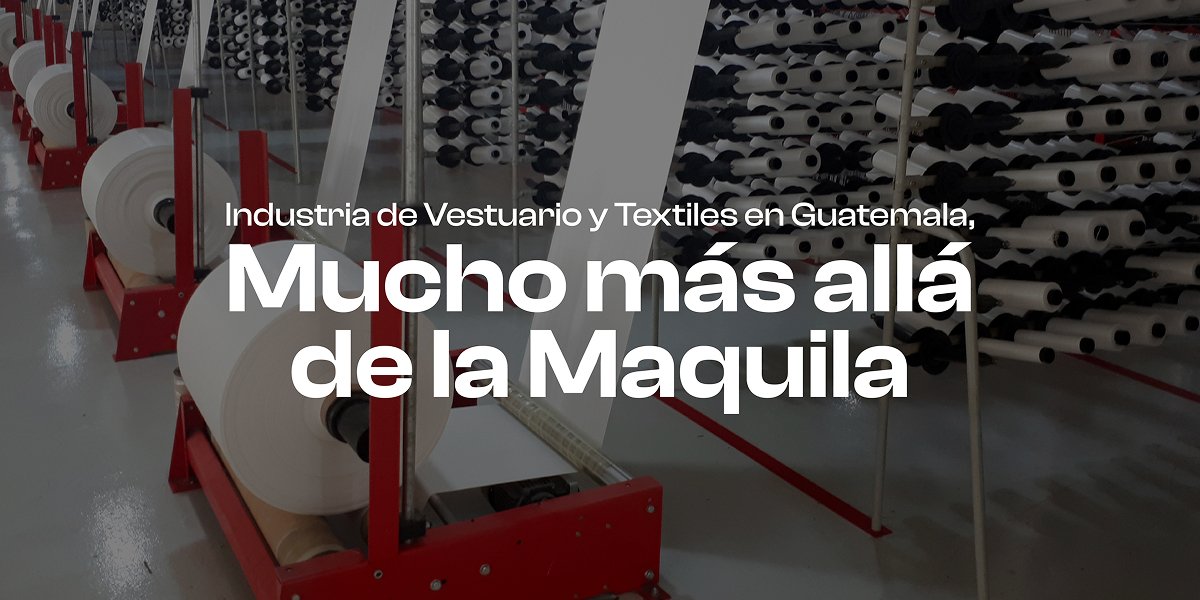The apparel and textile industry in Guatemala has evolved beyond traditional assembly to consolidate its position as an integrated solutions provider. With a robust ecosystem and a complete supply chain, the country is positioned as a strategic partner for international brands seeking quality, innovation and sustainability in a single destination.
The country’s apparel and textile sector is solid, with more than 30 years of presence in the region (Central America and the Caribbean), generating more than 180,000 direct and indirect jobs with marketing, manufacturing, logistics and services operations. In addition, the Central American country has trade agreements that facilitate exports and access to tariff benefits in the following markets:
Source: Office of Trade Treaty Administration, measurement year 2024 finalized.
A Complete Apparel and Textile Ecosystem
Guatemala has an integrated apparel and textile cluster that covers the entire supply chain, from the production of yarn with a wide variety of inputs, to the production of accessories such as labels, packaging, sewing thread, elastic, ribbons and cords. Also, the manufacture of garments with a variety of fabric or garment finishes. This structure expands the country’s capabilities in garment and textile production, confirming that companies offer high value-added solutions, beyond assembly. By the end of 2024, the country offered customers and partners 58.4% added value in the country’s exports.
Guatemala’s textile and apparel hub is the most organized and efficient in Central America, guaranteeing quality, speed and flexibility for the global market.
The industry cluster in Guatemala brings together all stakeholders to facilitate collaboration and process optimization:
- Spinning and weaving mills producing high quality fibers, yarns and fabrics.
- Clothing companies specialized in sportswear, underwear, casual wear, uniforms, coats, complete suits and industrial workwear and medical uniforms.
- Finishing services such as dyeing, printing, embroidery, screen printing, sublimation and special washes.
- Accessories manufacturers, with a network of manufacturers of accessories such as buttons, zippers, elastics, ribbons, labels, laces, fasteners, among others.
- Machinery dealers, ensuring efficient local sourcing.
More than 500 companies operate within this ecosystem, offering comprehensive solutions and related services such as certifications and logistics. This structure has allowed Guatemala to position itself as a reliable supplier to international brands such as Walmart, TARGET, Old Navy, NAUTICA, GAP, Tommy Hilfiger, Disney, JC Penney, Polo Ralph Lauren, Columbia Under Armour among others; all thanks to its ability to offer high quality products, variety of textile finishing techniques, incursion of sustainable processes and traceability. As well as its shorter delivery times, which strengthens the competitiveness of the sector in the country, compared to the international market.
Guatemala has a wide and diverse production of garments, mainly in knitted and woven fabrics. It also offers the possibility of producing a wide range of garments such as:
Nearshoring and the Future of Sustainable Global Trade
The nearshoring phenomenon has changed the rules of the game in textile manufacturing, and Guatemala is in a privileged position to take advantage of this trend. International companies are relocating their production to regions closer to their main markets, seeking to reduce delivery times and optimize logistics costs, reducing risks of possible interruptions in the supply chain and improving inventory management.
For the apparel and textile industry in the country, nearshoring has represented a great opportunity due to its proximity to the United States. Currently, 71.44% of apparel exports are destined for the U.S. market, and Guatemala has positioned itself among the top ten U.S. suppliers with products such as coats, cotton and synthetic T-shirts, shorts and pants.
In addition, the sector is highly integrated regionally, since 21.86% of the country’s exports are inputs such as yarn and fabric destined for other countries in the region. However, most of these inputs are transformed into garments whose final destination is still the United States, which means that the U.S. market accounts for more than 80% of the sector’s exports.
Map of America, ports and proximity of Guatemala to the United States.
In recent years, Guatemala has become an ideal destination for new foreign investment in apparel and textiles, not only because of its strategic location, but also because of its stable economy, a pro-investment government and a cluster that has been operating in an integrated manner for more than 30 years. This has allowed us to offer international clients agility, flexibility and high value-added and quality products.
In addition, the industry has been invigorated by reinvestments. Foreign and local companies have opted to modernize, expand, or verticalize their operations. A clear example is IMPERIALTEX, which has reinvested US$80 million in a new spinning plant that will generate more than 300 direct jobs.
Other companies such as SPATARO, in alliance with Guatemalan partners, have begun to manufacture dress shirts in the country, recovering manufacturing capacity. The announcement of foreign investments such as GRUPO NEXTIL (Spain) and PROTELA (Colombia), with more than US$30 million in investments, strengthens the industrial cluster by incorporating new products that are not manufactured in the region. With a strategic location and short transit time to the U.S., Guatemala offers a competitive advantage that few can match.
World Map and marked Guatemala’s main export destinations.
In addition, brands and other textile and apparel companies are looking to their strategic partners to make sustainability and traceability a fundamental pillar of their processes, offering efficient production and responsible practices. Guatemala has taken the lead in this transformation, implementing processes that meet the highest sustainability standards. Currently, the country stands out for its use of recycled materials, reduction of environmental impact and optimization of water and energy consumption. Key environmental certifications for the sector include:
In addition, Guatemala is the only country in Central America that is a member of CASCALE, which guarantees that the brands that choose to produce here work with suppliers aligned with their values of social and environmental responsibility.
Connect with Guatemala’s Textile Industry
If your company is looking for reliable suppliers with a sustainable and innovative approach, explore our sourcing and investment options:


